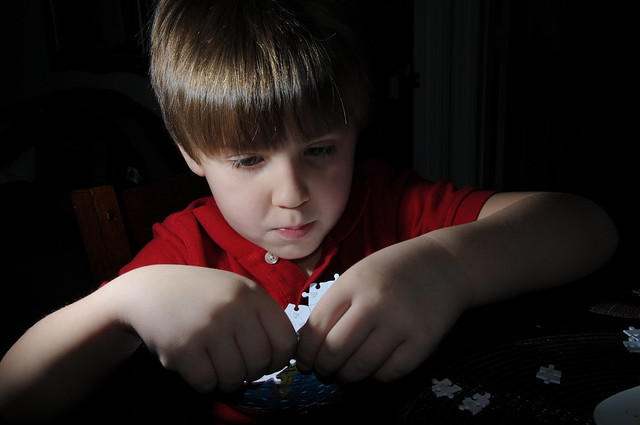 |
Now that we've looked at some of the benefits of off-camera lighting, lets go a little further. I want to introduce the idea of using multiple strobes. This is a very interesting way to shoot...one of my favorites. We'll start simple, then expound a bit in later posts.
So when is it a good idea to introduce another strobe into your setup?
It's a good idea to add a second strobe when you want little patches of controlled light in your frame. It allows you to light multiple sides of your subject without "blowing out" one side to light the other. It also allows you light on multiple planes, such as highlighting something in the background that you want to add emphasis to. But the most simple reason to add another light source is to lighten the shadows a bit on your subject. This is called "fill lighting".
~~~~~~sidenote~~~~~~
I know what you are thinking. Geez...I've got to buy another flash now? Crap. But don't stress out, you can wait a while. Ask Santa for it. In the meanwhile, you can keep yourself busy (for a lifetime really) with that one strobe of yours, I promise. You can always use another light source as your second strobe until you get one. How? Use your imagination! Need some help? Stay tuned for my next post to give you one idea.
~~~~~~sidenote~~~~~~
So, in my setup today we have 2 light sources. The main one will be called the "key light", which is my main light...the source throwing the most light onto the scene. And for that, I am using my trusty SB-800 Nikon off-camera strobe. The other light source, the "fill light", will simply be my on-camera flash.
Look at the photograph above. This is a picture of a precious little house plant my mom gave us a couple of years ago that we have tried hard to nurture. (Hard to imagine I would call home from work and ask my wife... "have you watered the plant lately?"...but it happens.) Anyway, back on track.
This photo was taken with only one light source first to prove a point. After setting the shutter speed fast enough to cut out any ambient light (at 1/125th of a second), I took the shot with my strobe to camera left, positioned about 3 feet away. This was a bare flash set at 1/32 power and nothing used to soften it (like an umbrella for example). So what you see is a hard light with hard shadow lines. Kind of nice and moody actually, but not what I'm after here. I want to bring out the leaves in the background a bit.
 |
| shot at 44mm, ISO 200, f/8, 1/125th of a sec, adding on-camera fill, 1/32 pwr |
Always remember that the way to a quality photo is to position your main light source (the key light) so it illuminates off-axis in relation to the camera, as we have discussed in previous posts. In other other words, don't ever make your on-camera flash your key light. You can use it as a fill light if necessary, but that's it. What's the result if you do use it as your key light? S-N-A-P-S-H-O-T. Snapshots have their place (as I have stated before), but I want you to avoid taking them when ever possible, and time allows.
By definition, your fill light will be less powerful than your key light. What you are after is for the fill light to soften the shadows a bit, not blow-out and overexpose the areas that the key light is already illuminating. If you are paying attention, you will notice that both my key and fill lights were set at the same power (1/32), so what's up with that? Simple explanation. My fill light is on-camera, and my camera was set back further (approx 5 feet away) than my key light. Remember, your light source increases with intensity exponentially as you place it closer to your subject.
Hope all this makes sense. Play a little. I will submit another example using on-camera fill in my next post to help.
Thanks for reading!
Brant
Wow, look at you...you made it all the way thru my post! I really appreciate you as a reader. Don't forget to register your email for automatic updates up at the top. Please pass this blog post on to your friends using the Tweet, Facebook, and Google+ buttons. That would be awesome.








